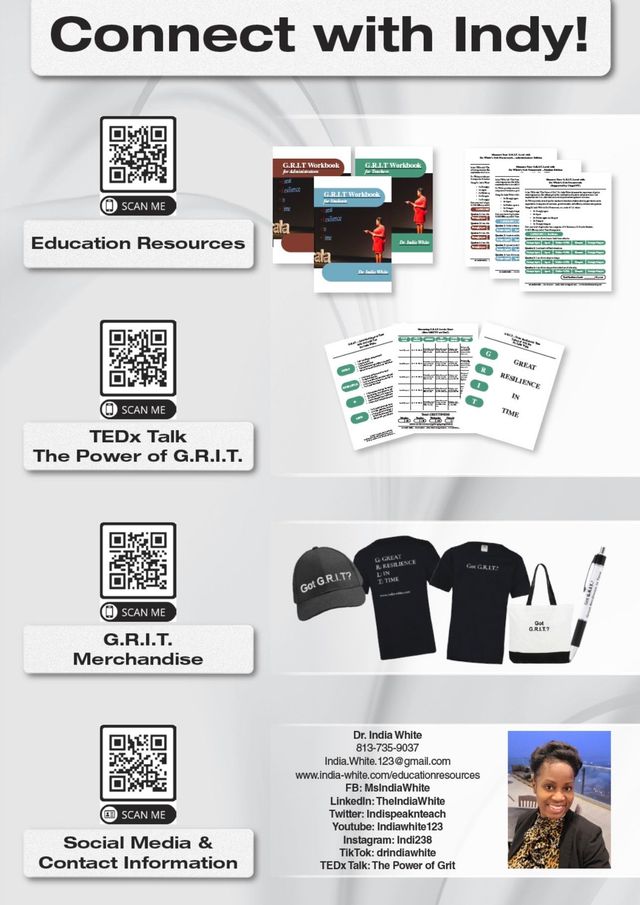5 Tips for Helping Students Stay Motivated through G.R.I.T. in the Math Classroom
India White • September 6, 2023
5 Tips for Helping Students Stay Motivated through G.R.I.T.!

5 Tips for Helping Students Remain Motivated Through Grit in the Math Classroom
Motivating students to persevere and remain engaged in the math classroom can be a challenging task for teachers. With added pressures from the pandemic slide, social medial influencers, and extracurricular activities, math can seem like the last area of interest in students across the nation. However, by fostering a growth mindset and encouraging grit, educators can empower their students to overcome obstacles and achieve success. Allow me to explore with you five effective tips that can help teachers inspire and support their students in developing grit in the math classroom.
Tip 1. Set Clear Goals and Expectations
Establishing clear goals and expectations is crucial for motivating students. Clearly communicate the learning objectives and outcomes for each math lesson, ensuring that students understand what is expected of them. Further, teacher should make sure that each goal established is realistic and can be met in a reasonable amount of time. Further, whenever goals are achieved, students should have a clear understanding behind how their teacher measured their proficiency, i.e. rubric, grading system,
in a way that allows them to grasp fairness and not subjectivity that could be detrimental to their academic success. Ed Week discussed how “parents, teachers, and school administrators concerned about providing equitable opportunities for every child are frequently stunned to learn that many common grading practices are outdated, inaccurate, and harmful to student success.”
Hence, by setting achievable goals, and using fair grading practices and policies, students can experience a sense of accomplishment and increase their trust in their teacher’s belief in them, which will boost their motivation to tackle more challenging math problems.
Tip 2. Emphasize the Significance of Effort
Sometimes, students need guidance on cultivating grit and building up intellectual effort during productive struggle. They need their teachers to teach students that effort is key to success in math.
Encourage them to embrace challenges and view mistakes as opportunities for growth. By highlighting the value of hard work and perseverance, students will develop a growth mindset, understanding that their abilities can be improved through dedication and practice. Help students to get “Gritty” with it, and to thrive when they are ready to give up! Remind students of the acronym for G.R.I.T., Great Resilience in Time, and how they have what it takes to be successful in being a proficient math student. As you do this over time, you will notice that your students will grow in their math identity, and will trust you more during vulnerable moments.
Tip 3. Provide Opportunities for Collaboration
Giving students the opportunity to learn collaboratively with their peers can be a powerful tool for motivating students in the math classroom. Teachers aiming to support students during metacognitive flow and productive struggle
should encourage students to work together on problem-solving activities, allowing them to share ideas, discuss strategies, and learn from one another. As students allow students to work with peers, this will strengthen their conceptual understanding while learning math. Further, it will enhance the learning environment for all students, and will turn math class into a fun experience. Collaboration fosters a supportive environment where students feel comfortable taking risks and persisting through difficult math problems. In addition, it will move mathematical discussion from being solely teacher led to student led, empowering student voice and leadership in the math classroom.
Tip 4. Offer Differentiated Instruction
Teachers must be willing to recognize that students have diverse learning needs and abilities. Further, students from various backgrounds will bring different lived experiences into the classroom, creating a need for differentiation. When teachers differentiate instruction, they provide a variety of math tasks and activities that cater to different skill levels. This approach ensures that all students are appropriately challenged, preventing boredom or frustration. By tailoring instruction to individual needs, students will feel supported and motivated to continue their math journey. As students are empowered during differentiated instruction, it will open the door for higher order thinking and metacognition to flow in the learning environment. This will lead to learners having a stimulated interest in considering real-world situations when trying to grasp concepts in the math classroom. Further, it will increase student engagement, and academic learners of students in the math classroom. Through differentiation, academic achievement and increased self-efficacy are inevitable for all students.
Tip 5. Celebrate Progress and Achievements
As teachers learn to celebrate students, it boosts the self-esteem and willingness to try for all students in the math classroom. Teachers should take time to be intentional when expressing accomplishments of their students and celebrate students' progress and achievements in math. Whether it’s during mathematical discourse, a group activity or project, educators should regularly provide positive feedback, recognizing their students’ efforts and growth. Further, teachers should choose to celebrate small victories,
such as mastering a new concept or solving a challenging problem. When celebrating accomplishments, teachers should aim to provide specific feedback, use appropriate names of learners and explain to the class why they are choosing to celebrate each student individually or for group efforts. By highlighting their accomplishments, students will feel valued and motivated to continue working hard in the math classroom.
Conclusion
When teachers motivate their students, it helps them to remain engaged and persevere in the math classroom is essential for their long-term success. By implementing these five tips of setting clear goals and expectations, emphasizing significance, providing opportunities for collaboration, offering differentiated instruction, and celebrating progress and achievements effort, teachers can foster a growth mindset and encourage grit among their students. By nurturing grit, teachers can empower their students to overcome challenges, develop a love for math, and achieve their full potential. Choose to help your students stay motivated through grit in your math classroom!!
Need More? Scan the QR Code to get your GRIT Workbook, GRIT Merchandise and more!
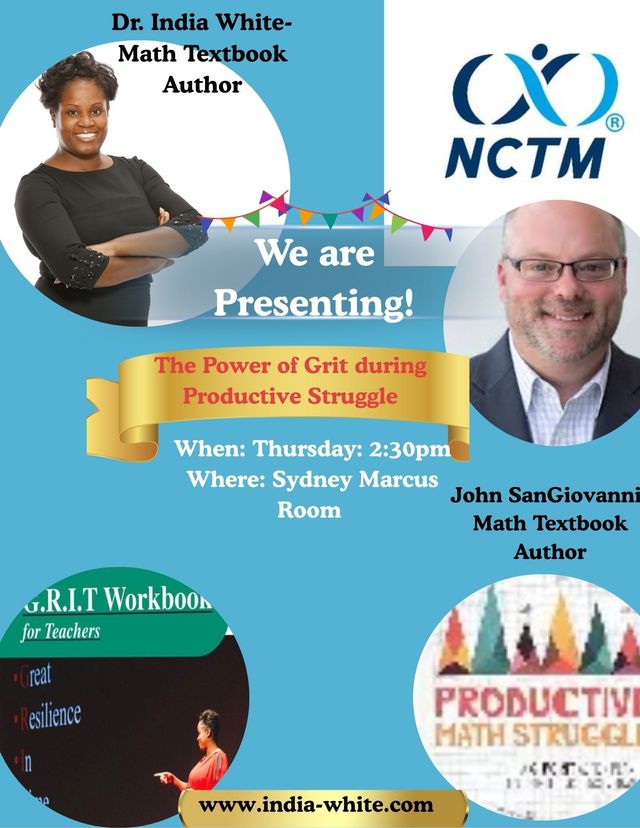
1 am excited to share that I will be a featured speaker at the NCTM 2025 Conference alongside the amazing John SanGiovanni. Together, we’ll explore the power of grit and productive struggle in the mathematics classroom—two essential ingredients for deep and lasting learning. John SanGiovanni will share his expertise on productive struggle, focusing on how teachers can design meaningful math experiences that challenge students to think critically, reason deeply, and persevere through complex problems. His work emphasizes that learning happens not when math is easy, but when students engage in struggle that leads to understanding and growth. In my portion of the session, I’ll discuss building grit through the G.R.I.T. Framework; Growth Mindset, Resilience, Self-Efficacy, and Time Management. Drawing from my G.R.I.T. Workbook for Educators, I’ll share practical tools and strategies educators can use to help students embrace challenges with confidence and persistence. By connecting grit to productive struggle, we can empower students to develop both the mindset and skills they need to overcome obstacles and achieve success in mathematics and beyond. I look forward to connecting with fellow educators at NCTM 2025 as we explore how to inspire perseverance, confidence, and a love for learning through grit and productive struggle.
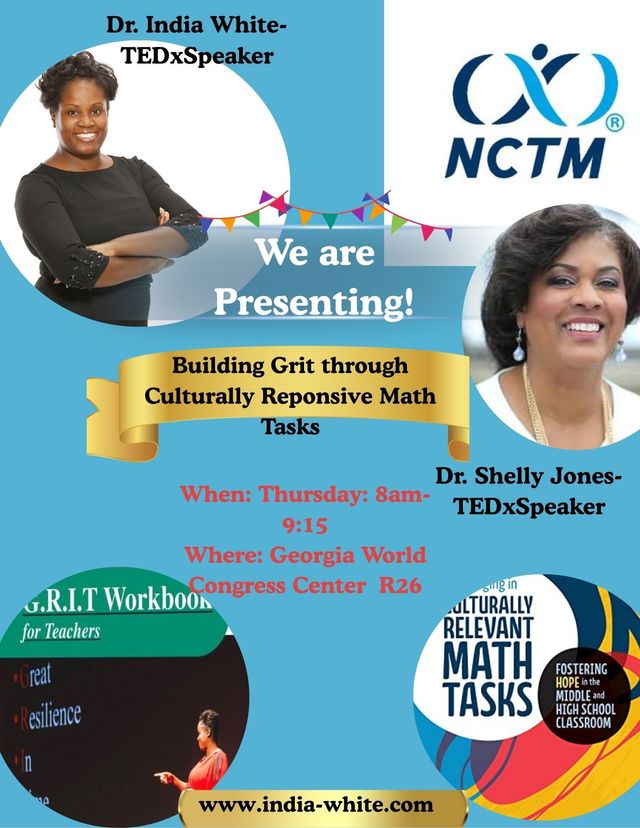
I am thrilled to announce that I will be a featured speaker at the NCTM 2025 Conference alongside the incredible Dr. Shelly Jones, Room 406. As TEDx speakers, Dr. Jones and I are uniting our passions for mathematics, equity, and purpose-driven teaching in our session titled Building Grit Through Culturally Relevant Math Tasks. Dr. Shelly Jones will share powerful insights from her book Culturally Relevant Math Tasks to Engage All Learners, which emphasizes how educators can connect mathematical concepts to students’ cultural experiences and lived realities. Her work highlights the importance of inclusion, representation, and authentic learning experiences that empower every student to see themselves as capable mathematicians. In my portion of the session, I will focus on Building Grit through the G.R.I.T. Framework—which stands for Growth Mindset, Resilience, Self-Efficacy, and Time Management. Through this framework, I will share strategies from my *G.R.I.T. Workbook for Educators* to help teachers cultivate perseverance and confidence in students as they navigate challenging math tasks. The goal is to help students not only solve problems but also believe they can thrive through productive struggle and perseverance. Together, Dr. Jones and I aim to inspire educators to blend cultural reasoning with resilience-building practices—creating classrooms where students’ identities and determination are celebrated equally. I’m excited to connect with passionate educators at NCTM 2025 and share how we can all build grit, equity, and excellence in math education.
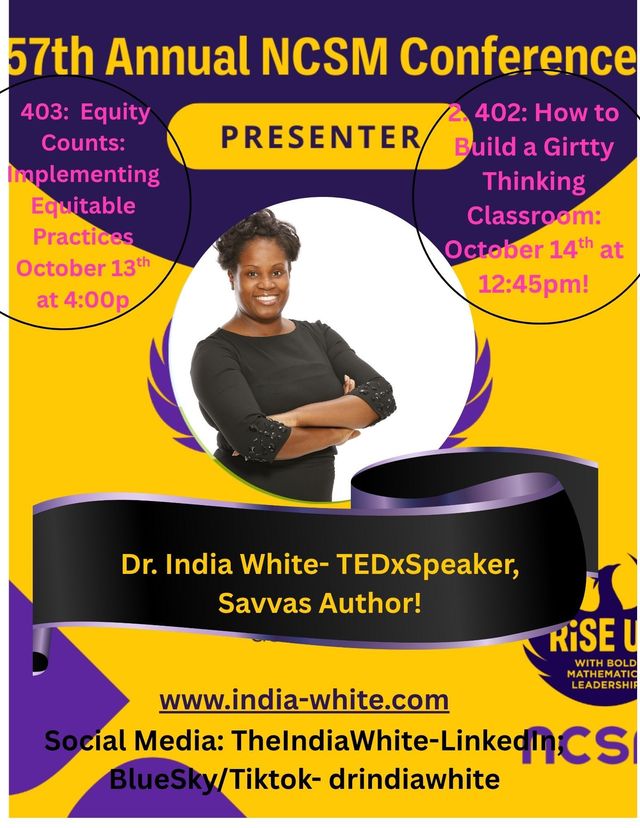
🌟 Exciting news! I’m thrilled to announce that I’ll be speaking at NCSM! 🎉 Join me for two informative sessions: 📚 402 How to Build a Gritty Thinking Classroom through Equity and Collaboration 🗓️ Tuesday, October 14, 2025 ⏰ 12:45 p.m. - 1:45 p.m. 📖 403 Equity Counts: Implementing Equitable Practices Across All Leadership Levels 🗓️ Monday, October 13, 2025 ⏰ 4:00 p.m. - 5:00 p.m. I’m ready to bridge the gap and give away door prizes, including my new book: Effective Teaching Practices Every Teacher Must Know! Don’t miss out! #nctm #ncsm #drindiawhite #grit #equity #parity NCSM: Leadership in Mathematics EducationNCTM - National Council of Teachers of MathematicsShelly M. JonesYolande Beckles
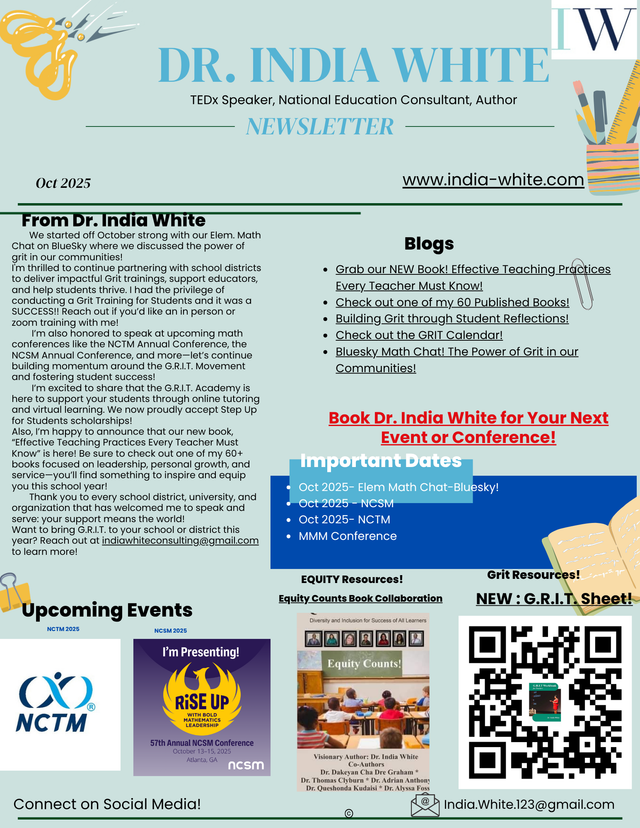
✨ Exciting October Update! ✨ I’m thrilled to share that my October Newsletter is live! This month, I’m honored to be speaking at both NCTM and NCSM—two powerful opportunities to connect with educators nationwide about building G.R.I.T. (Growth Mindset, Resilience, Self-Efficacy, and Time Management) and closing the achievement gap. 💡 I’m so grateful for the incredible teachers and leaders who continue to inspire and partner with me. Thank you for the work you do every day to make an impact in the lives of students! Check out the newsletter and explore resources here: 👉 www.india-white.com Let’s keep building grit and creating equity in education—together. 💪📚✏️
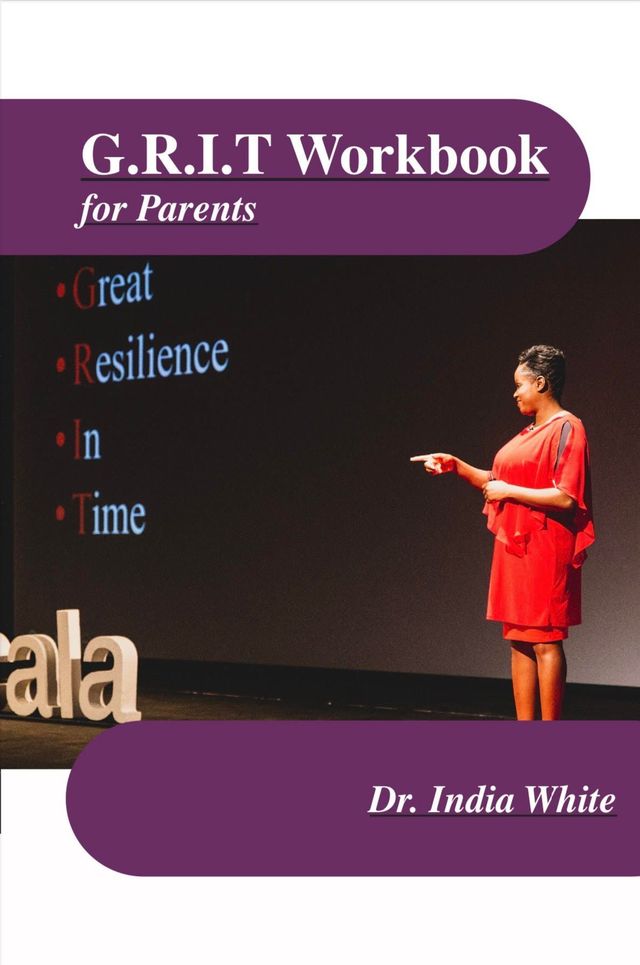
Building Grit in Our Elementary Math Communities This week I had the privilege of hosting an **Elementary Math Chat on BlueSky**, where educators from across the nation gathered to talk about one of my favorite topics: the **power of grit** in our classrooms and communities. The energy, collaboration, and passion from teachers, leaders, and math coaches reminded me once again of why this work matters. Why Grit in Math? We started by examining the latest NAEP data, which paints a sobering picture of how our students are performing in mathematics. While test scores often highlight areas of struggle, they also invite us as educators to ask a deeper question: How can we better equip our students to persist through challenges? This is where the G.R.I.T. framework—Growth Mindset, Resilience, Self-Efficacy, and Time Management—becomes a game-changer. Exploring the G.R.I.T. Framework During the chat, educators reflected on how grit shows up in their classrooms: Growth Mindset helps students believe they can learn math, even when it feels difficult. Resilience gives students the courage to keep trying when a solution isn’t clear right away. Self-Efficacy instills confidence that “I can solve problems if I keep working at them.” Time Management reminds students that persistence requires discipline and prioritization. Together, these pillars equip students to face not only academic challenges but also life’s challenges with courage and determination. G.R.I.T. Games and Assessments We also discussed two practical tools for teachers to bring grit alive in the math classroom: G.R.I.T. Games : Engaging activities that give students the chance to practice perseverance in fun, low-stakes ways while still reviewing math concepts. G.R.I.T. Assessment: A reflective tool for students to evaluate their own growth in grit—identifying where they are strong and where they can build more perseverance. These resources empower both teachers and students to see grit not as an abstract concept, but as something real, measurable, and impactful. Grit Beyond the Classroom One of my favorite takeaways from the chat was hearing educators share how grit impacts not just math performance but also the wider school community. When students develop grit, they become more confident problem-solvers, more engaged learners, and more supportive peers. This mindset spreads beyond the classroom walls, creating resilient communities that thrive together. Moving Forward The Elementary Math Chat reminded us that teaching math isn’t just about numbers—it’s about nurturing resilient thinkers who can face challenges with determination. As we continue to share strategies, reflect on data, and support one another, I’m excited to see how grit will transform classrooms across the nation. Let’s keep the conversation going: together, we can ensure every student has the tools to persist, grow, and succeed. Dr. India White is a national speaker, math consultant, and author of the G.R.I.T. framework. For professional development, G.R.I.T. trainings, or speaking engagements, connect at www.india-white.com
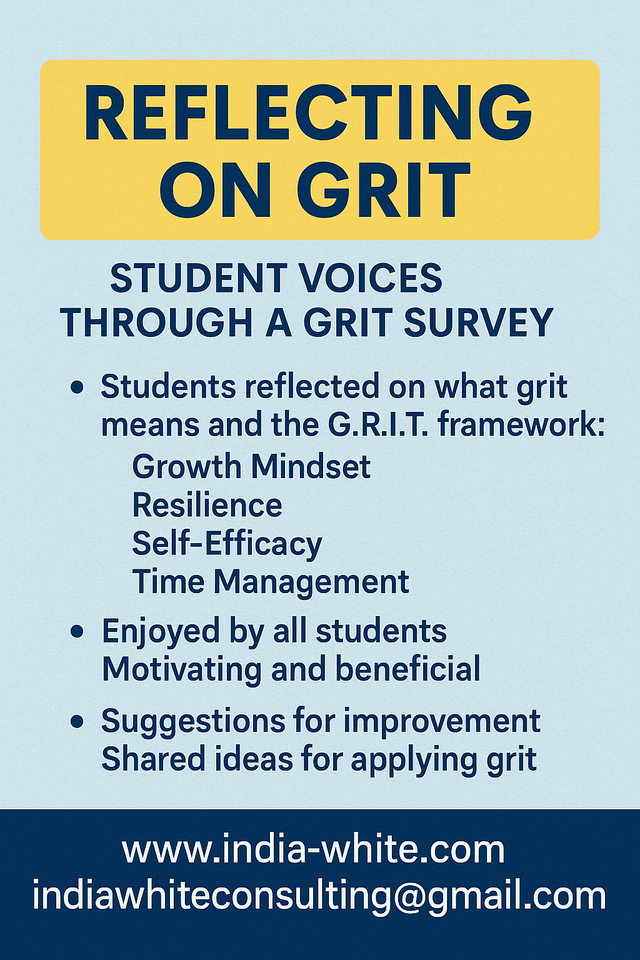
Building Grit in Students through Reflection Activities During a recent training session, I guided students through a structured activity designed to help them reflect on grit and personal accountability. This exercise encouraged them to explore how the G.R.I.T. framework—Growth Mindset, Resilience, Self-Efficacy, and Time Management—applies to their learning and development.^1 Students first participated in guided discussions on grit, focusing on strategies to remain committed, build resilience, and complete assignments on time.^2 Each student then journaled about their personal grit levels, identifying areas of strength and growth. This journaling provided a safe space for honest self-assessment and highlighted the importance of intentional focus.^3 The activity also included collaborative reflection where students discussed their “grit weeks,” emphasizing how to manage distractions, stay accountable, and complete tasks with perseverance.^4 By engaging in both personal reflection and peer discussion, students were able to see grit not as an abstract idea but as a practical tool to help them reach goals.^5 Through journaling and reflection, students deepened their understanding of the four pillars of the G.R.I.T. framework. Many expressed excitement for what lies ahead in their academic journey, recognizing that perseverance and accountability are vital to their long-term success.^6 The activity reinforced the importance of grit in education by providing students with practical tools for self-awareness and improvement. As Angela Duckworth emphasizes, grit involves sustained passion and perseverance over the long term.^7 Likewise, the Power of G.R.I.T. Workbook stresses that equipping students with reflective practices helps foster resilience and determination as they grow academically and personally.^8 Footnotes 1. Angela Duckworth, Grit: The Power of Passion and Perseverance (New York: Scribner, 2016), 8–9. 2. India White, The Power of G.R.I.T. Workbook (Tampa, FL: White Education Consulting, 2023), 12. 3. Duckworth, Grit, 44. 4. White, Power of G.R.I.T. Workbook, 28. 5. Duckworth, Grit, 92. 6. White, Power of G.R.I.T. Workbook, 46. 7. Duckworth, Grit, 275. 8. White, Power of G.R.I.T. Workbook, 59. Bibliography Duckworth, Angela. Grit: The Power of Passion and Perseverance. New York: Scribner, 2016. White, India. The Power of G.R.I.T. Workbook. Tampa, FL: Rising Glory Productions LLC, 2023.
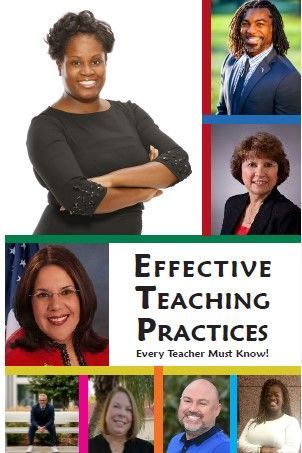
Grab Your Copy Today! The Effective Teaching Practices Every Teacher Must Know! Workbook is your guide to turning powerful teaching insights into action. Designed as a companion to the book, this workbook provides reflection prompts, guiding questions, and ample writing space to help you apply strategies from Dr. India White and her co-authors directly to your classroom. Whether you’re a new or experienced educator, this workbook will help you: - Adapt proven frameworks to meet the needs of your students. - Strengthen connections with families and communities. Reflect, plan, and grow as a teacher committed to excellence.Practical, reflective, and inspiring—this workbook will support your journey to becoming the most effective educator you can be. Visit www.india-white.com to grab your copy of the Effective Teaching Practices Every Teacher Must Know Book, as well as more resoruces for professioanld evleopment and more! Email indiawhiteconsulting@gmail.com for inquiries on future professional development or speaking opportunties with Dr. India White and authors. Workbook Link: Signed Copy Link: Book Also grab the EBOOK, now available on Amazon ! Or, Get your Paperback or Hardcover Copy for your Teachers today! Wait, don't forget to grab the BOOKs to go with the workbook! See below: Paperback Hardcopy Ebook

Listen to our LIVE Book Launch of Effective Teaching Practices Every Teacher Must Know!! We had an amazing time sharing tips and nuggets for teachers across the globe! Feel free to reach out to see how we can support you in your path! Grab Your Copy of the Book ( Paperback , Hardcover) or Workbook ( Hardcover , Paperback )today!
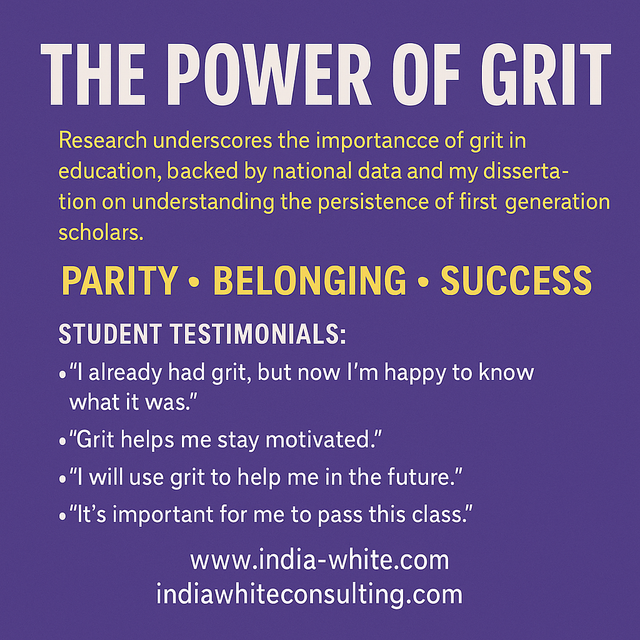
Cultivating Grit and Parity in the Classroom: Effective Strategies for Teachers In today’s educational landscape, fostering an environment where all students can thrive is more important than ever. Two concepts central to achieving this goal are grit and parity. Grit, characterized by perseverance and passion for long-term goals, and parity, which emphasizes equitable outcomes for all, work synergistically to create a foundation for student success. This blog explores practical strategies for implementing these ideas in the classroom, incorporating Dr. India White’s Grit Framework and essential pillars such as growth mindset, resilience, self-efficacy, and time management. Understanding Grit and Parity Grit is defined as the ability to maintain effort and interest over the long term despite challenges, as highlighted by Dr. Angela Duckworth. On the other hand, parity in education means ensuring that all students, regardless of their backgrounds or abilities, have equal opportunities to succeed academically. Creating a learning environment that emphasizes both concepts can support students in their academic and personal development. Teacher Tips for Effective Implementation of Grit and Parity 1. Set Clear, High Expectations: - Cultivate a classroom where high expectations are the norm. Communicating that effort is as important as achievement encourages students to embrace challenges and develop grit. - Strategy : Clearly outline objectives and performance standards, and highlight examples of resilience in achieving long-term goals. 2. Differentiate Instruction for Equitable Outcomes: - Offering tailored support to meet diverse student needs promotes parity. Use assessments to identify areas where students struggle, enabling you to provide targeted interventions and supports. - Strategy : Regularly assess student understanding and adjust instruction accordingly. Make use of various teaching modalities, such as small group instruction or one-on-one support. 3. Foster a Growth Mindset: - Instill the belief that abilities can be developed through dedication and hard work. A growth mindset, as defined by Dr. Carol Dweck, contributes to resilience and encourages students to see challenges as opportunities for improvement. - Strategy : Use positive language that reinforces effort and learning from setbacks. Encourage students to reflect on their learning journeys and recognize their growth over time. 4. Incorporate the Grit Framework: - Dr. India White’s Grit Framework outlines key pillars that support the development of grit: resilience, self-efficacy, and effective time management. By integrating these principles into your teaching, you can cultivate a classroom culture that encourages persistence. - Strategy : Embed discussions on resilience into lesson plans, and provide students with tools and strategies for improving self-efficacy and managing their time effectively. 5. Create Opportunities for Collaboration: - Collaborative learning environments enhance both parity and grit. When students work together, they learn from one another and build a supportive community that fosters resilience. - Strategy: Design team-based projects that encourage problem-solving and critical thinking. Assign roles that promote individual accountability while fostering group collaboration. 6. Celebrate Progress and Effort: - Shift the focus from solely recognizing final achievements to celebrating effort and incremental progress, reinforcing the value of grit. - Strategy : Establish a recognition system where students can share their efforts and successes, such as a “growth board” showcasing milestones related to resilience and persistence in learning. 7. Develop Time Management Skills: - Teaching students effective time management strategies helps them prioritize tasks and allocate time for practice and study, which is essential for developing grit and achieving parity. - Strategy : Provide tools such as planners or digital apps to help students organize their assignments and set realistic timelines. Teach them to set short- and long-term goals, breaking larger tasks into manageable steps. 8. Utilize Student Feedback: - Gathering student feedback about their learning experiences encourages them to express their needs and challenges. This insight guides the development of teaching strategies that promote both grit and p arity. - Strategy: Use surveys or class discussions to gather insights and adjust your teaching to better meet students' needs. Resources for Further Reading - Duckworth, A. (2016). Grit: The Power of Passion and Perseverance. Scribner. - This book delves into the significance of grit and provides strategies for fostering resilience and persistence. - White, I. (2020). Understanding the Persistence of First-Generation College Students (Doctoral dissertation). University of Florida. - This dissertation examines factors contributing to the persistence of first-generation students and offers practical recommendations for educators. - Dweck, C. S. (2006). Mindset: The New Psychology of Success. Random House. - This book discusses the implications of adopting a growth mindset in education and how it affects resilience and learning outcomes. Conclusion Integrating grit and parity into the classroom not only supports immediate academic success but also equips students with essential skills for lifelong learning. By implementing strategies that cultivate resilience, build self-efficacy, promote effective time management, and foster a growth mindset, educators can create an inclusive and supportive learning environment. In doing so, they empower every student to face challenges with tenacity and achieve their goals, transforming their educational journey into a path of success and fulfillment.

Empowering Students Through Parity, Grit and Belonging: A Guide for Educators In today’s educational landscape, the importance of creating environments that foster diversity, equity, inclusion (DEI), and fostering belonging is increasingly recognized. However, to truly drive student success, educators must evolve their focus towards parity and belonging—concepts that promote not just access, but also meaningful engagement and community within the classroom. Understanding Parity and Belonging Parity refers to ensuring that all students achieve equitable outcomes, regardless of their backgrounds. While DEI has focused on equal access to resources and opportunities, parity addresses the systemic barriers that prevent some students from realizing the same level of success as their peers. Belonging goes beyond inclusion; it emphasizes the need for students to feel accepted and valued within the learning community. When students feel they belong, they are more integrated into their classroom environment—promoting engagement and enhancing their overall educational experience. Dr. India White’s research on the Grit Framework offers a valuable perspective on this topic. Grit, defined as perseverance and passion for long-term goals, is essential for overcoming educational challenges. According to White (2020), cultivating grit empowers students to navigate adversities, making it a critical component in facilitating both parity and belonging in education. Furthermore, data from the National Assessment of Educational Progress (NAEP) highlights the disparities in academic performance across demographic groups, showcasing the need for targeted strategies that promote equal outcomes and a sense of belonging for all students (NAEP, 2021). Five Tips for Educators to Promote Parity and Belonging 1. Integrate Grit into the Curriculum: - Encourage students to set and pursue long-term goals. Share stories of resilience and perseverance, and engage them in discussions that emphasize the importance of grit in achieving success. Incorporate activities that challenge students to step out of their comfort zones while providing support as they navigate these challenges. 2. Utilize Data-Driven Instruction: - Leverage data from assessments like NAEP to identify gaps in student performance. Use this information to tailor instruction to meet the needs of all learners, ensuring that every student has access to the resources necessary for success. Regularly evaluate progress and adjust strategies to promote equitable outcomes. 3. Create a Supportive Classroom Culture: - Build a safe and inclusive classroom culture where all students feel valued. Encourage open dialogue about identity and differences, allowing students to share their experiences. Use team-building activities to foster a sense of community, promoting relationships that support everyone’s learning journey. 4. Collaborate with Families and Communities: - Involve families and community members in the educational process. Host workshops and events that engage parents and caregivers, providing resources that empower them to support their children’s education. Collaboration with community organizations can also enhance learning opportunities, extending support beyond the classroom. 5. Professional Development on Grit and Belonging: - Invest in ongoing professional development focusing on the principles of grit, parity, and belonging. Educators can learn strategies to foster resilience and ensure that they are equipped to create inclusive environments where all students can thrive. Learning together creates a unified approach, reinforcing a culture of belonging within the school. Conclusion As educators strive to create impactful learning experiences, the focus on parity and belonging emerges as essential to student achievement. By integrating Dr. India White’s Grit Framework into teaching practices, fostering supportive classroom cultures, and leveraging data to drive instruction, educators can ensure that all students have the opportunity to succeed. In doing so, they contribute to a future where every student not only has access to education but also a genuine sense of belonging. References NAEP. (2021). National Assessment of Educational Progress. Retrieved from [NAEP website]. White, I. (2020). Understanding the Persistence of First-Generation College Students (Doctoral dissertation). University of Florida.

